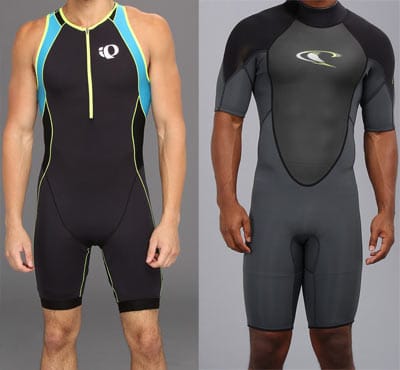Content Menu
● Why Should Swimwear Be Tight?
● How Tight Should Swimwear Be?
>> The Snug Fit Principle
>> Signs of Proper Tightness
>> How Tight Is Too Tight?
>> The Drawbacks of Tight Swimwear
>> The Case for Loose Swimwear
>> How to Choose the Right Fit
● Factors Affecting Swimwear Tightness
>> Material and Stretch
>> Style and Purpose
>> Body Shape and Size
● Tips for Choosing the Right Tightness
● Common Questions About Swimwear Tightness
>> 1. Should swimwear be tight or loose for competitive swimming?
>> 2. Will a tight swimsuit stretch out over time?
>> 3. Can a swimsuit be too tight?
>> 4. How do I know if my swimsuit fits correctly?
>> 5. Are there different tightness standards for men and women?
● Conclusion
● Citations:
Swimwear is an essential part of aquatic activities, whether for competitive swimming, casual beach outings, or water sports. A common question that arises among consumers and athletes alike is: should swimwear be tight? This article delves into the reasons why swimwear should be tight, the appropriate level of tightness, and how to choose the right fit for comfort and performance. As a Chinese swimwear OEM factory serving international brands, we also highlight how proper fit impacts manufacturing and customer satisfaction.

Why Should Swimwear Be Tight?
Swimwear is designed to fit snugly against the body, often described as a "second skin." The tightness serves several important functions:
- Minimizes Water Resistance: A tight swimsuit reduces drag in the water, allowing swimmers to move more efficiently and quickly.
- Provides Support: For women, a tight swimsuit helps contain and support the breasts, reducing movement that can cause discomfort or distraction during swimming.
- Prevents Wardrobe Malfunctions: Loose swimwear can shift or slip, which is undesirable in both recreational and competitive settings.
- Enhances Comfort in Movement: Although it may seem counterintuitive, a properly tight swimsuit allows for better mobility because it stays in place and moves with the body.
Generally, swimwear should be tight enough to hug your curves and outline your contours without causing pain or restricting your range of motion[1][3][5].
How Tight Should Swimwear Be?
The Snug Fit Principle
The ideal swimwear fit is snug but not painfully tight. It should feel compressive, almost like a gentle squeeze, to provide support and reduce drag. If the suit is too loose, it will sag and create resistance in the water. If it is too tight, it can cause skin redness, restrict breathing, and limit stroke movement[1][4][5].
Signs of Proper Tightness
- You should be able to move freely without feeling restricted.
- The suit should not cause sharp discomfort or pain.
- It should leave slight marks on the skin when dry, but these marks should fade quickly.
- You should not feel like you are spilling out or overly compressed.
- For competitive suits, a tighter fit is common, sometimes a size smaller than regular swimwear to maximize hydrodynamics[2][5].
How Tight Is Too Tight?
Excessive tightness can lead to:
- Skin irritation and redness.
- Difficulty breathing or restricted chest movement.
- Impaired swimming strokes due to limited flexibility.
- Discomfort that distracts from performance or enjoyment.
If you experience these, consider sizing up or trying a different cut or brand[2][5].
The Drawbacks of Tight Swimwear
1. Discomfort
While tight swimwear can offer support, it can also be uncomfortable if it is too tight. A swimsuit that is excessively snug can restrict movement and even cause chafing. It's essential to find a balance between a snug fit and comfort.
2. Body Shape Considerations
Not all body types are suited for tight swimwear. Some individuals may find that a looser fit is more flattering and comfortable. It's important to choose a swimsuit that complements your body shape and makes you feel good.
3. Breathability
Tight swimsuits may not allow for adequate breathability, especially in hot weather. This can lead to overheating and discomfort during prolonged wear. Choosing the right fabric can help mitigate this issue.

The Case for Loose Swimwear
While tight swimwear has its advantages, loose swimwear also has its place in the world of swimwear fashion. Here are some benefits of opting for a looser fit:
1. Comfort
Loose swimwear can be more comfortable for casual wear, allowing for greater freedom of movement. This is particularly true for beachgoers who may be lounging or playing beach games rather than swimming competitively.
2. Versatility
Loose swimwear can often double as casual wear. Many people wear swim trunks or cover-ups as part of their everyday outfits, making them a versatile addition to your wardrobe.
3. Body Positivity
For those who may feel self-conscious about their bodies, loose swimwear can provide a sense of security. It allows for more coverage and can help individuals feel more comfortable in their skin.
How to Choose the Right Fit
When deciding whether your swimwear should be tight or loose, consider the following factors:
1. Activity Level
If you plan to engage in competitive swimming or high-energy water sports, a tight swimsuit may be the best option. For casual beach days or lounging by the pool, a looser fit may be more appropriate.
2. Body Type
Different body types may require different fits. For example, individuals with curvier figures may prefer swimsuits that offer more support, while those with athletic builds may feel comfortable in tighter fits.
3. Personal Preference
Ultimately, the choice between tight and loose swimwear comes down to personal preference. Try on different styles and fits to see what makes you feel the most comfortable and confident.

Factors Affecting Swimwear Tightness
Material and Stretch
Swimsuits are typically made from fabrics like nylon, spandex, or polyester blends that stretch when wet. Swimwear naturally loosens slightly in water and with use, so a suit that feels tight when dry will become more comfortable once wet[4].
Style and Purpose
- Competitive Swimwear: Designed to be very tight to reduce drag and improve speed.
- Recreational Swimwear: Should be snug but prioritize comfort.
- Training Suits: Often a balance between tightness and comfort to allow long wear.
Body Shape and Size
Different body shapes require different fits. For example, swimmers with protruding hip bones might find some suits tight in those areas but still acceptable overall[2].
Tips for Choosing the Right Tightness
- Try on suits when dry: Look for a snug fit that is not painful.
- Test mobility: Move your arms and legs to ensure freedom of movement.
- Consider the fabric: Some brands and materials stretch more than others.
- Account for water stretch: Remember the suit will loosen slightly when wet.
- Use sizing charts: Follow brand-specific sizing guides for best results.
Common Questions About Swimwear Tightness
1. Should swimwear be tight or loose for competitive swimming?
Swimwear for competitive swimming should be tight to reduce drag and improve speed, often a size smaller than regular swimwear[2][5].
2. Will a tight swimsuit stretch out over time?
Yes, swimsuits stretch with use and exposure to water, so a tight fit when dry will become more comfortable when wet[4].
3. Can a swimsuit be too tight?
Yes, if it causes pain, restricts breathing, or limits movement, it is too tight and a larger size or different style should be considered[5].
4. How do I know if my swimsuit fits correctly?
It should feel snug but comfortable, allow full mobility, and leave slight marks that fade quickly without causing discomfort[1][3].
5. Are there different tightness standards for men and women?
Yes, women's swimwear often requires more support, so tightness around the bust is important, while men's suits focus on snugness around the waist and thighs[2][5].
Conclusion
In summary, should swimwear be tight? The answer is yes, but with the right balance. Swimwear should fit snugly enough to provide support, reduce drag, and stay in place, yet not so tight that it causes discomfort or restricts movement. Understanding this balance helps consumers choose the best swimwear for their needs, whether for sport or leisure. As a swimwear OEM factory, we emphasize quality materials and precise sizing to meet these standards for our international clients.
Citations:
[1] https://knix.com/blogs/resources/how-tight-should-a-swimsuit-be
[2] https://www.reddit.com/r/Swimming/comments/qcw18u/question_about_swimsuit_tightness/
[3] https://swimweargalore.com/en-us/blogs/the-swim-report/how-tight-should-your-swimsuit-fit
[4] https://blog.coralreefswim.com/do-swimsuits-stretch-or-shrink-in-water
[5] https://attireproject.com/how-tight-should-swimsuit/
[6] http://www.whosevoice.com/home/2010/4/13/johnny-depp-enigmatic-surfer-yogi-doors-expert-voice-of-the.html
[7] https://www.halocline.co.uk/blogs/news/is-it-better-for-a-swimsuit-to-be-tight-or-loose
[8] https://www.baiia.com.au/blogs/baiia-blog/should-my-swimsuit-feel-snug




































